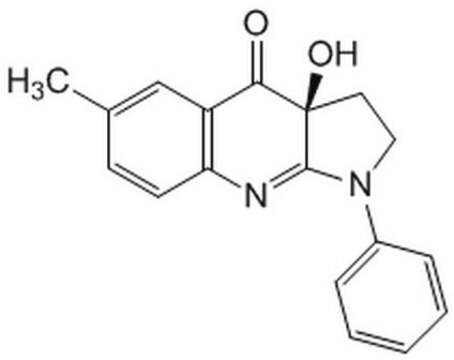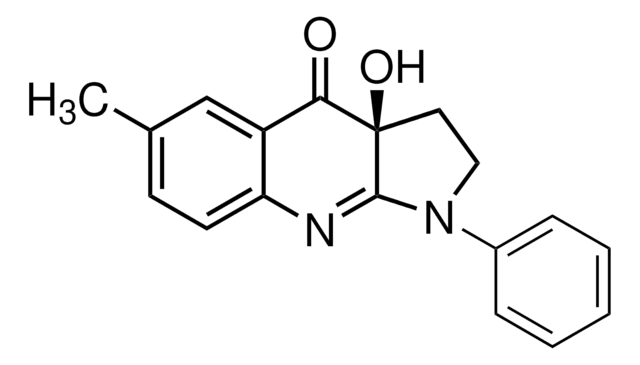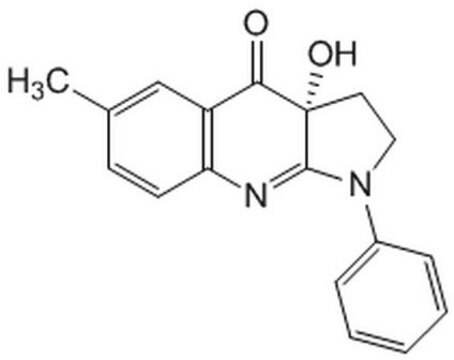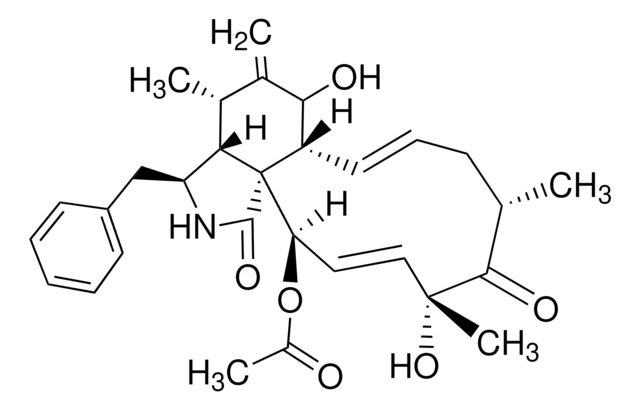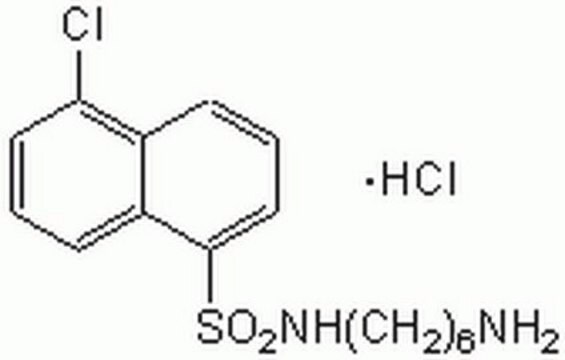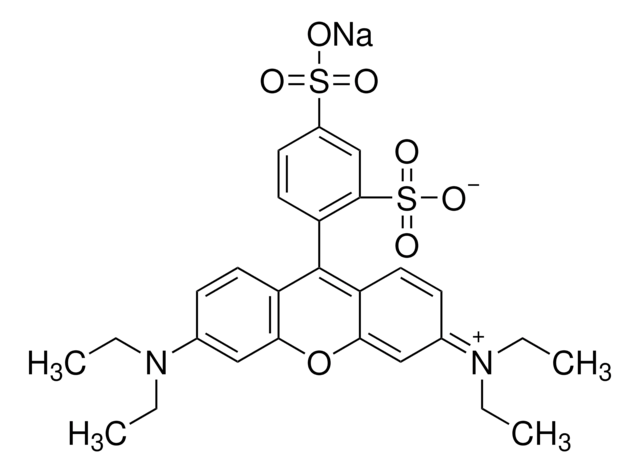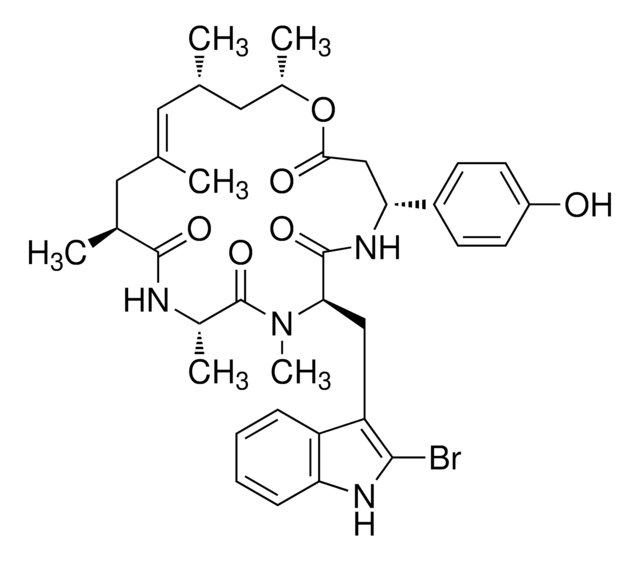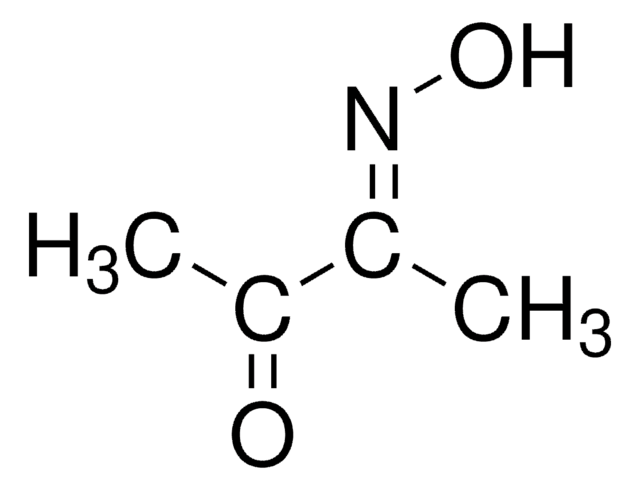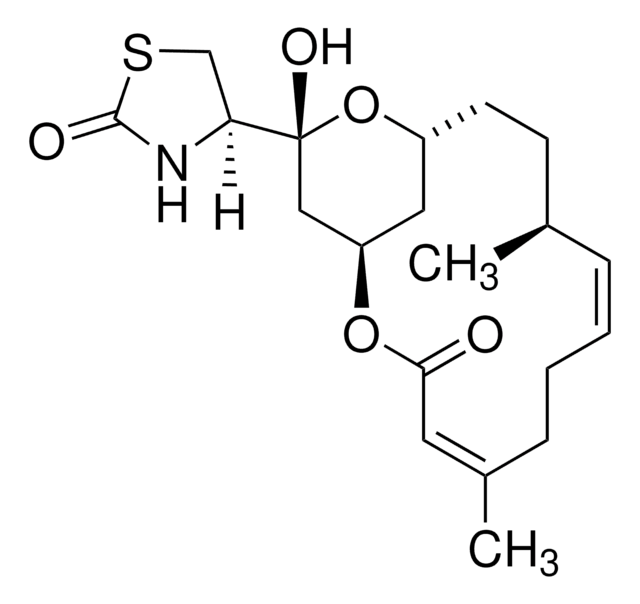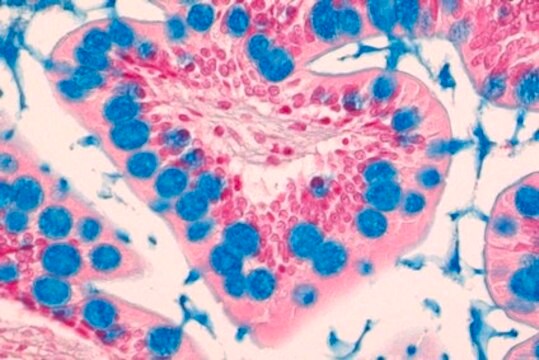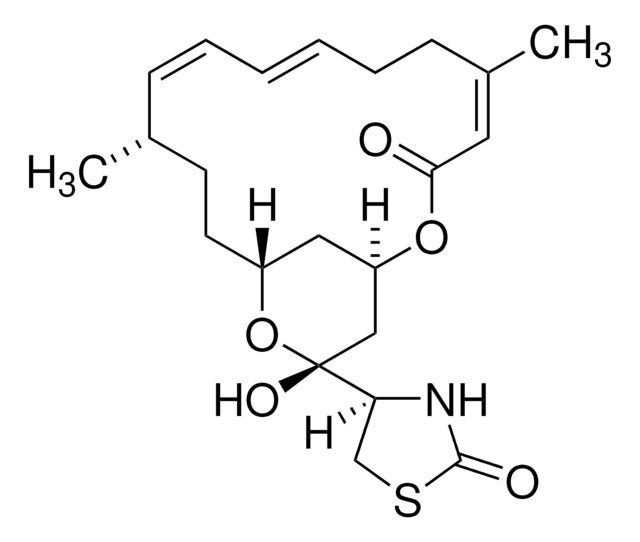203390
(±)-Blebbistatin
≥97% (HPLC), solid, Myosin II inhibitor, Calbiochem®
Synonym(s):
(±)-Blebbistatin
About This Item
Recommended Products
product name
(±)-Blebbistatin, (±)-Blebbistatin, CAS 674289-55-5, is a cell-permeable, selective, and reversible inhibitor of nonmuscle myosin II. Blocks cell blebbing and disrupts cell migration & cytoKinesis in vertebrate cells.
Quality Level
Assay
≥97% (HPLC)
form
solid
manufacturer/tradename
Calbiochem®
storage condition
OK to freeze
protect from light
color
yellow
solubility
methanol: 1.5 mg/mL
100% DMSO: 100 mg/mL
90% DMSO: 75 mg/mL
shipped in
wet ice
storage temp.
−20°C
InChI
1S/C18H16N2O2/c1-12-7-8-15-14(11-12)16(21)18(22)9-10-20(17(18)19-15)13-5-3-2-4-6-13/h2-8,11,22H,9-10H2,1H3
InChI key
LZAXPYOBKSJSEX-UHFFFAOYSA-N
General description
Biochem/physiol Actions
ATPase
Packaging
Reconstitution
Other Notes
Kovacs, M., et al. 2004. J. Biol. Chem.279, 35557.
Straight, A.F., et al. 2003. Science299, 1743.
Cheung, A., et al. 2001. Mol. Biol. Cell Suppl.12, 271a.
Legal Information
Storage Class Code
11 - Combustible Solids
WGK
WGK 2
Flash Point(F)
Not applicable
Flash Point(C)
Not applicable
Certificates of Analysis (COA)
Search for Certificates of Analysis (COA) by entering the products Lot/Batch Number. Lot and Batch Numbers can be found on a product’s label following the words ‘Lot’ or ‘Batch’.
Already Own This Product?
Find documentation for the products that you have recently purchased in the Document Library.
Customers Also Viewed
Our team of scientists has experience in all areas of research including Life Science, Material Science, Chemical Synthesis, Chromatography, Analytical and many others.
Contact Technical Service